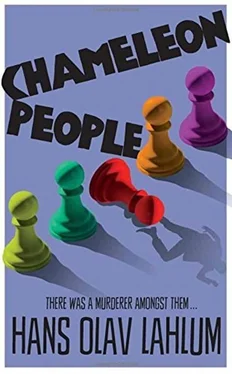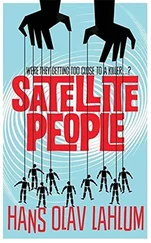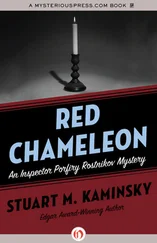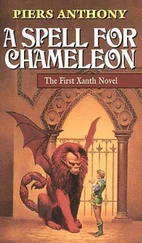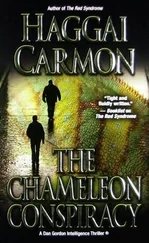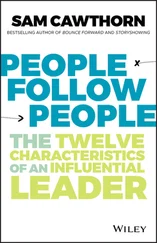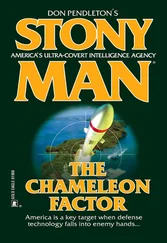‘Yes. There was one other person. He stood without moving on the other side of the road and watched the whole incident, the stabbing and then the person with the limp coming along and pulling out the knife. I was rather taken aback, but then thought that perhaps he was either looking the other way or was in a state of shock. The onlooker left at the same time as the person with the limp, only in the opposite direction. I say he, but it could equally have been a woman. It was not much more than a shadow I saw, but he was wearing a man’s hat.’
The hat may have been a coincidence, but I was not convinced that it was. I felt as though I had been winded. The ancient woman in the rocking chair had turned everything upside down in the space of five minutes. Here she was sitting with a vital piece of the puzzle that only proved I had put it together completely wrong.
I had an overwhelming feeling of paralysis, but could also feel the adrenalin starting to surge. There was a strange sense of relief for the boy on the red bicycle and his mother, too, and mounting curiosity as to what had actually happened when Per Johan Fredriksen was killed.
I said that she had been of great help and asked if it would be possible to send a written version of her statement for her to verify and sign.
We looked at each other for a brief moment. Then she started to cough again and said that if it was important, perhaps I should take a written statement straightaway.
‘My cough is getting worse and worse,’ she said. ‘This past week I have been surprised to wake up every morning and realize that I am still alive.’ She chuckled and then lit her pipe again, but it was clearly serious.
I wrote down her statement by hand on a plain sheet of white paper. She read it through, gave a brief nod and then signed her name, Henriette Krogh Hansen, underneath. Her ornate handwriting would not have looked out of place on a scroll from another century. Her gnarled little hand reminded me of an eagle’s claw and it burned like a red-hot poker when I shook it, her eyes unblinking when I said goodbye. Henriette Krogh Hansen was in no doubt as to what she had seen, and I was in no doubt that what she had seen was what happened.
My boss was supposed to go home at half past five, but at a quarter to six he was still sitting opposite me. Danielsen’s shift had finished at five, which was an enormous relief.
The boss listened in silence to my account of the most recent development. His expression was inscrutable, but it seemed to me that there was something disapproving about him.
‘You are, as usual, to be praised for following up every lead, Kristiansen. How old did you say this new witness was?’
I took a deep breath, in and out. Then I replied: ‘One hundred and four. She is very old indeed, but has perfect vision and a clear head. I found her to be wholly credible.’
I hoped that my boss would nod. But instead, he just sat there waiting.
‘It is, however, a ripe old age for an eyewitness who has seen something through the window at dusk. The only thing she said that can be checked and that was not reported in the papers, is that Fredriksen was stabbed twice. She might, of course, simply be guessing. That being said, it is unsettling news and could indicate that Fredriksen’s murderer is still at large. But it might cause confusion and unfounded speculation if we were to step up the investigation after the prime suspect has committed suicide and left behind a note that was as good as a confession.’
We fell silent. All at once, I found I was not sure of my boss. But I felt that I had to say something, before he asked me to wrap up the investigation as planned.
So I said that the solution would be to announce that the prime suspect had indeed taken his own life and left behind a note that could be interpreted as a confession, but that the police would continue the investigation as a matter of course.
My boss gave a quick nod.
‘Yes, let’s do that. You follow up things with the family. Question whom you want, call in Danielsen if you need help and let me know immediately of any new developments.’
I promised to do that and stood up to leave. My boss remained sitting. I got the distinct feeling that there was something else, and that he was deliberating whether to bring it up. So I stayed where I was.
He coughed and then said: ‘If we follow it through and remain open to the possibility that someone other than the late young Tor Johansen…’ he paused. ‘It seems more likely that we should look for the clues in Fredriksen’s private life and any connection to the old mystery from 1932, rather than his political activities. So perhaps it would be best to start with the friends in the group who are still alive?’
Further investigation into the mystery from 1932 was at the top of my list of priorities. So I agreed without hesitation, but added that we should in principle be open to all possibilities as the victim had been a senior politician with many strings to his bow.
My boss could hardly disagree with this. So he simply nodded. I got the impression that he had more on his mind than he was willing to say, and left in anticipation of what more I might discover about the murder mystery from 1932.
Miriam had been given the spare key to my flat and used it well. Supper was already on the table when I got home at twenty-five past six.
I thanked her for her understanding and apologized for being late. She replied merrily that it was important to use time efficiently, as she had a meeting at the party office at eight. She then asked me to tell her without further ado about any developments in the investigation.
She lost her twinkle when I told her about the death earlier in the day and what had happened since then. Miriam looked as though she might burst into tears for a minute or two when she heard the story of the boy and his mother. She sat deep in thought for the latter part of the meal.
‘Tell me again what the quote was,’ she said, eventually.
I got it out of my bag.
‘“Because either it is the world that is turned to slavery, or me… and it is more likely to be the latter”.’
She nodded mournfully. ‘Just as I thought. It’s from a book on the Norwegian literature curriculum – at the end of Jonas Lie’s One of Life’s Slaves. The protagonist, Nikolai, is a young man who has grown up in very difficult circumstances and has done his utmost to be a law-abiding pillar of society, but he ends up in prison all the same. In the novel, Nikolai ends up committing murder out of sheer desperation and frustration. So it could be interpreted however you want. But you don’t think he committed the murder, do you?’
Her question was unexpected, but I shook my head firmly all the same. ‘What about Hauptmann, then?’
Miriam gave this some thought while she ate the rest of her food.
‘I’m not sure. It’s a new name to me, but there is something familiar about it,’ she said. She sat quietly for a while longer. Then suddenly she pointed at me and jumped up from the sofa.
‘I think we saw something about him when we went through the history book,’ she said.
Four seconds later she was already over by the bookshelf. She leafed with impressive speed to the middle of the book, then exclaimed with satisfaction: ‘And here we have Hauptmann! If he is who I think he is. And it has to be, surely?’
I rushed over to her, looked at the picture and said without thinking that I agreed, it had to be him.
The photograph was from 1936. Hauptmann’s first name was Bruno. He was a dark, thin and serious young man in the photographs taken during a court case in New Jersey, where he was being tried for the kidnapping and murder of the legendary pilot, Charles Lindbergh’s little boy. Hauptmann came from a simple background and the evidence against him was so controversial that he was not executed until a year after the court case. Hauptmann was a German immigrant who could barely make himself understood, but maintained his stammering innocence until his death.
Читать дальше
